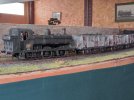Lancastrian
Western Thunderer
Phil,
'ere, where's me buffer head gorn ?
Great photos and video.
Ian
'ere, where's me buffer head gorn ?

Great photos and video.
Ian

Wonderful stuff, Phil. Thank you. I look forward to seeing anything else you may have.
Brian
Edit - I failed to say that I reckon that film to video transfer is first class, and the subject is fascinating. I was a salesman in the mid '70s to 1980 and the North East was in my patch. I also worked for a company with a relaxed attitude to taking occasional diversions (as long as the figures looked good). What an opportunity missed!
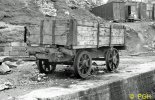
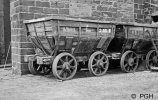
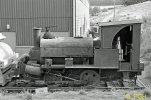
I always thought Lewin would make an interesting model in 7mm/1ft. I have a feeling 'Impetus Kits' did one, but I may be wrong.
The above picture is interesting as the con-rods appear to be circular cross section. Note also the standard gauge Simplex to the left of Lewin.
Mike
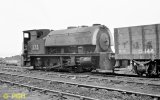
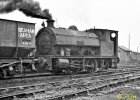
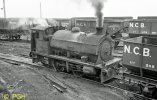
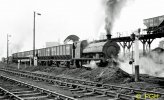
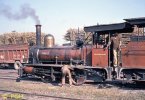
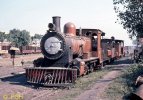
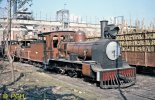
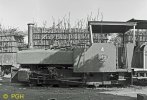
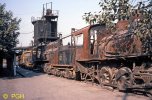
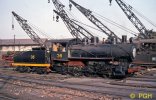
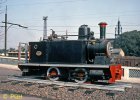
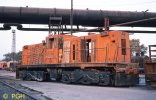
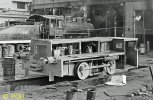
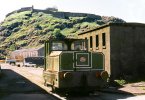
Judging by the chalk, it’s a pug…

I have a model of 9792 in Mardy condition. A modified Dapol fitted with radio control.
View attachment 156772
View attachment 156773
1501 at Coventry Colliery in September 1969 shortly before steam was replaced by two new Hunslet diesels.
1501 was withdrawn by BR at Southall in January 1961 and moved to Swindon. The following month it was sold together with two other members of the class, 1502 and 1509, to the NCB for use at Coventry Colliery. The three locos were sent to the Bagnall works at Stafford for repair in June 1961, but no work had been done when the works were taken over by English Electric in July 1961 and a decision made to cease locomotive work at Stafford. The three locos were therefore sent to Andrew Barclay in Kilmarnock, but before they could be moved by rail the cylinders had to be removed as they would not clear the Scottish Region loading gauge. The cylinders were sent in wagons accompanying the locomotives. After repair and repaint in maroon livery they had to be transported to Coventry Colliery by road, 1501 arrived at the colliery in June 1962, the other two in August 1962 and March 1963.
1501 was saved for preservation on the Severn Valley Railway and moved to Tyseley for tyre turning in July 1970, arriving at Bewdley in October 1970. 1502 and 1509 were stripped of useable parts as spares for 1501 and other GWR locos and sent to John Cashmore Ltd. at Great Bridge for scrap in October 1970. After a long protracted restoration 1501 was first steamed in May 1997.
9792 at the part demolished (or part never completed ?) loco shed at Mardy Colliery in May 1970. It was acquired from BR Neath in March 1964 for use on the NCB's Aberaman System and transferred to Mardy Colliery in 1965. When photographed it was in light steam so possibly out earlier in the day or as reserve to the diesel then in use.
When photographed again in August 1970 it was out of use. In place of the missing numberplate on the cab side the lettering "Mardy No.4 9792" was crudely painted on, and chalked below was "your days are numbered" ! In 1973 it was sold to scrap merchant J.Mahony & Co.Ltd. of Newport, and scrapped there in September 1973.
9642 at the NCB's Maesteg Locomotive Shed in August 1970. Not strictly an industrial loco but a preserved loco which saw some use on an industrial system. 9642 was withdrawn in November 1964 from Old Oak Common and sent to R.S.Hayes Ltd., Bridgend Scrapyard, but instead of being scrapped it was used to shunt other locomotives in the yard. In 1968 it was purchased by the South Wales Pannier Group and moved to the NCB's Maesteg Locomotive Shed, where it was used to give occasional brake van rides over the NCB system. With the impending closure of the NCB system it was moved to BP Chemicals Ltd., Baglan Bay Works for storage in March 1985, thereafter moving to the Swansea Vale Railway Preservation Society at Llansamlet in April 1989, and later the Dean Forest Railway in 1998. It was purchased privately in 2005, and I believe it's currently under restoration for the Gloucestershire Warwickshire Railway.
7754 was withdrawn by BR in January 1959 from Wellington, Shropshire. It was sold to the NCB in July 1959 and sent to Windsor Colliery, Abertridwr, South Wales. Its stay at Windsor Colliery was short as it was at Llanbradach Colliery by June 1960, then to Ogilvie Colliery in September 1962. After a repair at Tredegar Central Workshops it was sent to Elliot Colliery by June 1965, then Talywain Loco Shed in January 1969 from where it worked the 2½ mile line to Blaenserchan Colliery. After closure of the majority of the Talywain System in April 1970 (a short length of track remained in use to serve the nearby landsale yard with coal coming in from BR for another 4 years) 7754 was moved to Mountain Ash in May 1970.
View attachment 156777
7754 at the back of the loco shed at Mountain Ash in August 1970 with some work being carried out on the safety valves.
View attachment 156778
7754 at work in July 1971. It was withdrawn after a cylinder cover blew off in 1975. The NCB donated 7754 to the National Museum of Wales who placed it on permanent loan to the Llangollen Railway in August 1980.
